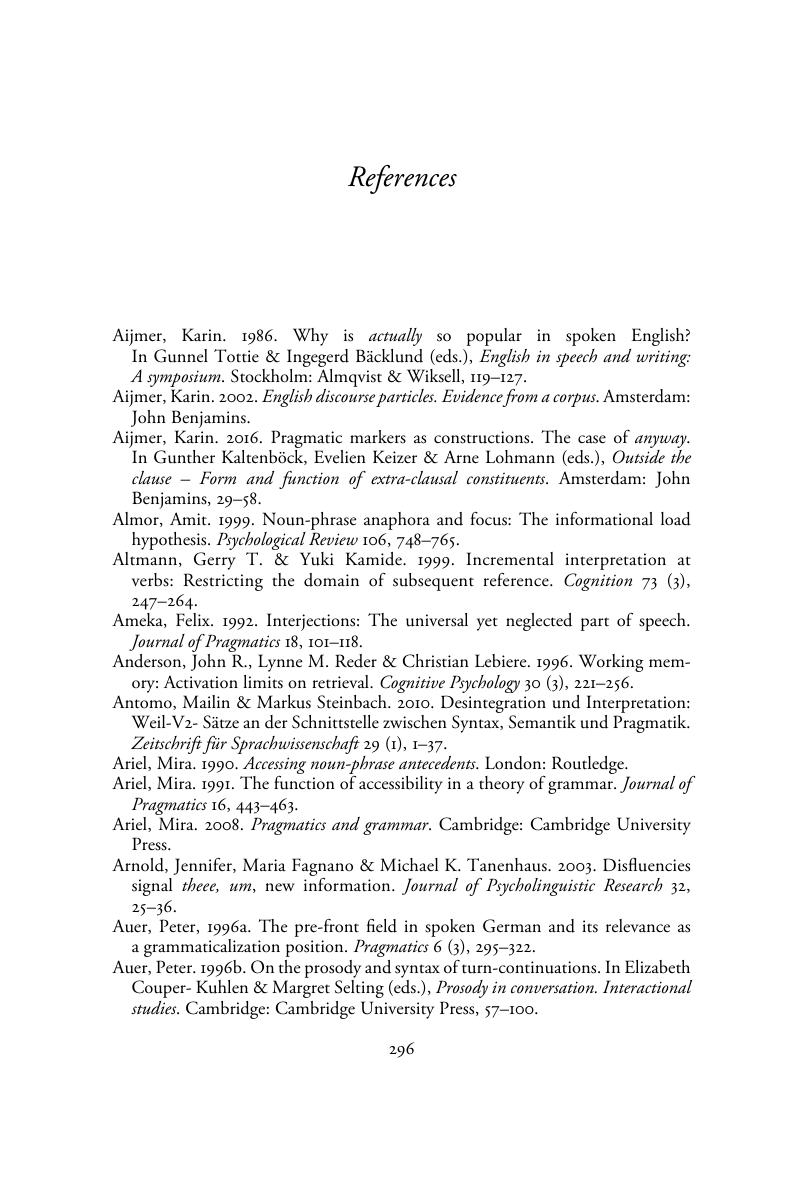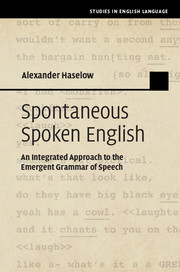Book contents
- Spontaneous Spoken English
- Studies in English Language
- Spontaneous Spoken English
- Copyright page
- Contents
- Figures
- Tables
- Acknowledgments
- Transcription Symbols
- Abbreviations
- 1 Introduction
- 2 Toward an Interfield Approach to the Study of Spontaneous Speech
- 3 A Dualistic Approach to Grammar: Microgrammar and Macrogrammar
- 4 Linearization and Macrogrammatical Fields
- 5 Macrogrammar and the Linearization of Structural Segments
- 6 Neurolinguistic Evidence for the Grammatical Dualism Assumption
- 7 Conclusions
- References
- Index
- References
References
Published online by Cambridge University Press: 09 November 2017
- Spontaneous Spoken English
- Studies in English Language
- Spontaneous Spoken English
- Copyright page
- Contents
- Figures
- Tables
- Acknowledgments
- Transcription Symbols
- Abbreviations
- 1 Introduction
- 2 Toward an Interfield Approach to the Study of Spontaneous Speech
- 3 A Dualistic Approach to Grammar: Microgrammar and Macrogrammar
- 4 Linearization and Macrogrammatical Fields
- 5 Macrogrammar and the Linearization of Structural Segments
- 6 Neurolinguistic Evidence for the Grammatical Dualism Assumption
- 7 Conclusions
- References
- Index
- References
Summary

- Type
- Chapter
- Information
- Spontaneous Spoken EnglishAn Integrated Approach to the Emergent Grammar of Speech, pp. 296 - 322Publisher: Cambridge University PressPrint publication year: 2017



